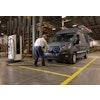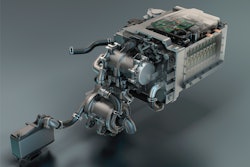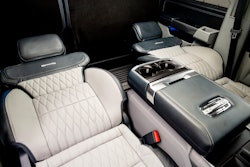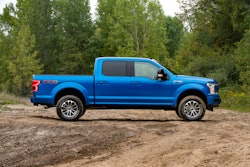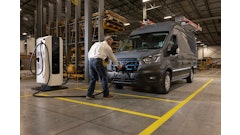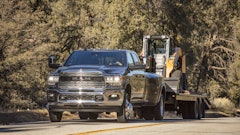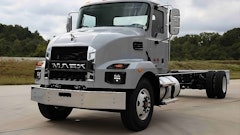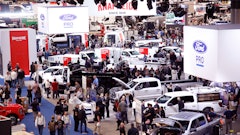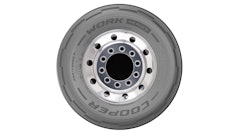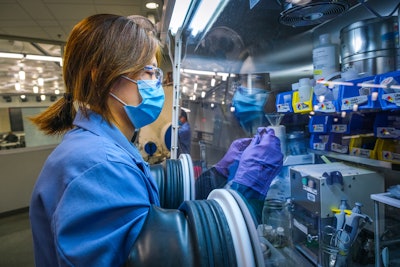
General Motors Co. Chairman and CEO Mary Barra revealed that the company will offer 30 all-electric models globally by mid-decade. Forty percent of the company’s U.S. entries will be battery electric vehicles by the end of 2025. Barra also announced an increase in GM’s financial commitment to EVs and AVs today to $27 billion through 2025 – up from the $20 billion planned before the onset of the COVID-19 pandemic.
“Climate change is real, and we want to be part of the solution by putting everyone in an electric vehicle,” says Barra. “We are transitioning to an all-electric portfolio from a position of strength and we’re focused on growth. We can accelerate our EV plans because we are rapidly building a competitive advantage in batteries, software, vehicle integration, manufacturing and customer experience.”
At the virtual Barclays Global Automotive Conference, Barra and Doug Parks, GM executive vice president of Global Product Development, Purchasing and Supply Chain, will share key elements of GM’s plan, including:
- By 2025, GM will launch 30 EVs around the world, and more than two-thirds will be available in North America. Cadillac, GMC, Chevrolet and Buick will all be represented, with EVs at all price points for work, adventure, performance and family use.
- Engineering advances have increased the previously stated GM-estimated maximum range of Ultium-based vehicles from 400. GM’s Ultium-based EVs, when produced, will be capable of driving ranges up to 450 miles on a full charge1.
- GM’s versatile Ultium platform provides the building blocks for everything, from mass market to high performance vehicles – all from a single, common cell in most markets and a set of interchangeable propulsion components.
- More than half of GM’s capital spending and product development team will be devoted to electric and electric-autonomous vehicle programs.
- GM’s second-generation Ultium chemistry is projected to deliver twice the energy density at less than half the cost of today’s chemistry. GM is already prototype testing this next-generation technology, which is expected to be available mid-decade.
- Ultium technology, supported by hundreds of granted patents and pending patent applications, is expected to bring EVs closer to price parity with gas-powered vehicles.
- Both the GMC HUMMER EV and Cadillac LYRIQ programs were accelerated, along with other vehicles to be revealed at a later date.
- GM is hiring 3,000 electrical system, infotainment software and controls engineers, plus developers for Java, Android, iOS and other platforms.
- GM continues to explore third-party licensing for its Ultium EV architecture, batteries and propulsion systems, along with its Hydrotec fuel cell technology developed with Honda.
- GM, in collaboration with its dealers, will leverage its sales and service capabilities and software-powered innovations to deliver an exceptional customer experience for EV loyalists and new EV customers alike.
GM innovates in EV propulsion despite COVID-19
Ultium already represents a milestone achievement in electrification, with battery pack costs nearly 40 percent lower than those in the Chevrolet Bolt EV. Despite the pandemic, GM’s work on EVs accelerated during 2020.
Now, just eight months after the technology was first revealed, GM is projecting that second-generation Ultium packs, expected mid-decade, will cost 60 percent less than the batteries in use today with twice the energy density expected.
These second-generation cells will get closer to cost parity with gas-powered engines due to:
- Cell design that enables higher energy density and uses less non-active material, making more room for the part of the battery that produces energy.
- Manufacturing efficiencies through GM’s Ultium Cells LLC joint venture with LG Chem.
- Better integration between vehicles and their battery packs, enabling fewer cells and modules.
- Less expensive cathodes, reduced active material, novel electrolytes and the first use of lithium metal anodes in a GM battery.
GM has completed hundreds of test cycles on the multi-layer prototypes of this next-generation Ultium cell chemistry. Production cells are expected by mid-decade.
The Ultium platform is flexible enough to accept new chemistry and even cell types, without redesigns to its architecture. Ultium batteries will be easy to service at the module level, which makes repair costs less expensive than having to replace the whole pack.
“GM’s EV development times are speeding up and costs are going down rapidly, so we expect our Ultium EV programs to be profitable from the first generation on,” said Parks. “It’s not just the cost and performance of our innovative EV components that will give us a competitive advantage in a fast-changing industry, but how we integrate them with other advanced systems like Super Cruise, our Vehicle Intelligence Platform electrical architecture and other technologies pioneered in our traditional portfolio.”
GM is doing most of the development work on these cells internally at its Chemical and Materials Systems Lab, located at the Global Technical Center in Warren, Michigan. This facility features a fabrication line with polymer mixing, slurries, a coating machine and a cell assembly room.
Next year, GM will break ground on an all-new Battery Innovation Lab and Manufacturing Technology Center to develop the next-generation Ultium battery chemistry.
GM speeds its EV rollout and pace of innovation
The modular and highly flexible qualities of the Ultium system, along with engineering advances in battery technology, the use of virtual development tools and lessons learned during the HUMMER EV development process, have enabled GM to bring EVs to market much faster than originally planned.
The 2022 GMC HUMMER EV’s development time of 26 months – down from about 50 months – is now the benchmark.
The development schedules for 12 vehicle programs have been moved up, including:
- GMC HUMMER EV
- Three other GMC Ultium variants, including an EV pickup
- Four Chevrolet EVs, including a pickup and compact crossover
- Four Cadillacs
In addition, Buick’s EV lineup will include two Ultium-based EVs.
After the GMC HUMMER EV, the next EV to launch will be the LYRIQ, Cadillac’s first all-electric vehicle, which will arrive in the first quarter of 2022, nine months ahead of schedule.
“Ultium is already changing the way customers – and investors – view our company,” Barra said. “We are resolved as a management team to move even faster to expedite the transition to EVs. The all-electric future we are building integrates all the things we do better than anybody else – so we can put everyone in an EV, generate profitable growth and create shareholder value.”

